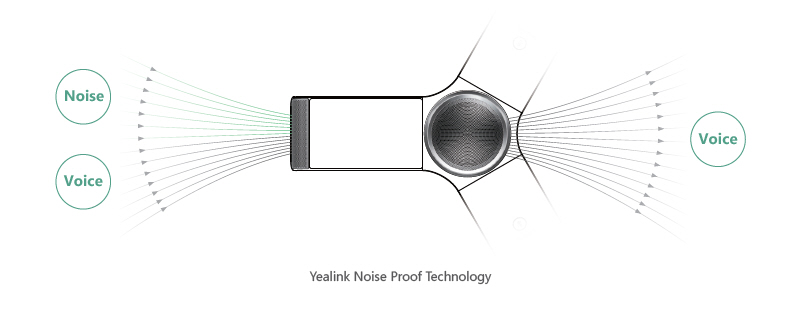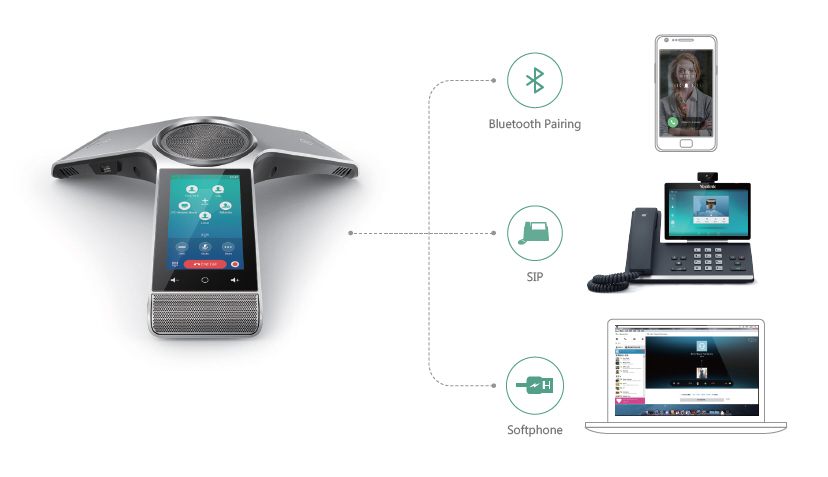Introduction
In a world where technological advancements dictate the speed and efficiency of communication, businesses are increasingly turning to Voice over Internet Protocol (VoIP) systems as a viable alternative to traditional telephony. This shift is driven by the need for cost-effective solutions that not only enhance communication but also integrate seamlessly with modern business operations. In this article, we will delve into the cost-benefit analysis of adopting a modern VoIP system over old school telephony, exploring various dimensions such as cost savings, features, scalability, and overall impact on productivity.

The allure of modern VoIP phone systems lies in their ability to deliver high-quality voice communications while reducing operational costs significantly. Therefore, we aim to answer the question: Is it worth making the switch?
What is a VoIP Phone System?
A VoIP phone system is an advanced communication technology that converts voice into digital signals transmitted over the internet. Unlike traditional telephony that relies on copper wires and analog signals, VoIP utilizes broadband connections, allowing users to make calls over existing internet infrastructure.
How Does VoIP Work?
VoIP works through several key components:
Internet Connection: The backbone of any VoIP system; a stable and fast internet connection is essential. VoIP Phones: These can be specialized devices or software applications (softphones) installed on computers or mobile devices. VoIP Gateway: This device connects traditional phone lines with the VoIP network. Server: Manages call routing and other functions.Benefits of Using VoIP Phone Systems
- Cost Efficiency: Lower call rates, especially for international calls. Flexibility: Users can make and receive calls from anywhere with an internet connection. Scalability: Easily add or remove lines as business needs change.
Cost-Benefit Analysis of Adopting a Modern VoIP System Over Old School Telephony
Understanding whether transitioning to a VoIP system makes sense involves analyzing both costs and benefits comprehensively.
Initial Setup Costs
When comparing old-school telephony with http://zionfkbn669.huicopper.com/how-voip-phone-systems-can-transform-your-small-business-communication modern VoIP systems, one must consider initial setup costs:
| Item | Traditional Telephony | Modern VoIP System | |--------------------|-----------------------|----------------------| | Equipment | High (phones, PBX) | Moderate (VoIP phones)| | Installation Fees | High | Low (DIY options) | | Monthly Service Fees| Medium | Low |
Even though both systems require an initial investment, the long-term savings associated with VoIP often outweigh these upfront costs.
Ongoing Costs Comparison
Monthly service fees are typically lower for VoIP systems due to their reliance on internet connectivity rather than dedicated phone lines.
- Traditional landlines may incur hefty charges for international calls. VoIP phone systems often offer flat-rate pricing for unlimited calling within certain regions.
Feature Set Comparison
Another crucial aspect in our cost-benefit analysis is the feature set offered by each system:
Traditional Telephony Features
- Basic calling capabilities Call waiting Caller ID
Modern VoIP Phone Systems Features
- Video conferencing Call forwarding Enhanced voicemail-to-email services Integration with CRM tools
The value added by these features can considerably improve productivity and collaboration within teams.
Scalability and Flexibility of Modern VoIP Systems
One of the prominent advantages of adopting a modern VoIP phone system is its scalability. As businesses grow or downsize, adjusting telecommunication resources becomes seamless compared to traditional methods.
How Easy Is It to Scale Up?
Scaling up with a traditional system might involve purchasing new hardware and installing additional lines—an arduous task involving significant downtime and costs. In contrast, adding new lines in a VoIP phone system can often be done in minutes through simple software updates or configurations.
Remote Work Capabilities
In today’s remote work culture, having a flexible communication tool is paramount:
Employees can access their office numbers from anywhere. Calls can be routed seamlessly across different geographical locations without additional costs.This flexibility not only enhances employee satisfaction but also boosts productivity levels significantly.
Quality of Service Comparison Between Old School Telephony and Modern VoIP Systems
While cost savings are essential, quality should never be compromised when it comes to communication tools. Let’s delve deeper into how each system fares in terms of service quality.
Sound Quality Assessment
Historically, traditional telephony has been known for its reliability and clarity; however:
- Advances in broadband technology have significantly improved sound quality in VoIP systems.
Factors affecting sound quality include:
Internet speed Network congestion Hardware usedBy investing in good quality routers and bandwidth management techniques, businesses can achieve exceptional sound quality comparable to traditional phones.
Security Considerations in Implementing Modern VoIP Systems
With great power comes great responsibility—especially regarding data security! Security concerns are often raised when discussing VoIP phone systems, so let's clarify some key points here.
Data Encryption Techniques in Modern VoIP Systems
Modern VoIP phone systems utilize encryption protocols such as Secure Real-Time Transport Protocol (SRTP) which safeguards voice data during transmission over the internet.
How Secure Are These Systems?
While no system is entirely foolproof against cyber threats:
Regular software updates help patch vulnerabilities. Firewalls specifically designed for IP traffic protect against unauthorized access.Businesses should implement robust security practices alongside their chosen solution for optimal safety.

Integrating Modern Tools With Your New VoIP System
Transitioning into a modern VoIP phone system doesn't mean abandoning all existing technologies; rather it opens doors for integration possibilities!
CRM Integration Benefits
Linking your VoIP phone systems with Customer Relationship Management (CRM) software allows:
Automatic logging of calls. Enhanced customer insights from call history data.This integration streamlines processes leading to improved customer service experiences—an essential factor driving growth!
Collaboration Tools Compatibility
Many organizations rely on collaborative tools like Slack or Microsoft Teams; integrating these platforms with your new telephone infrastructure creates unified communication channels that promote teamwork efficiency!
User Experience Enhancements Through Modern Technology Adoption
Modern technology adoption largely focuses on improving user experience within organizations—a feat easily achieved through implementing an advanced VoIP phone system!
How Does User Experience Improve?
Key enhancements include:
Intuitive user interfaces making navigation easier. Customizable settings tailored according to individual preferences. Accessible training materials ensuring smooth onboarding processes for staff members adapting to new tools!These improvements lead directly towards higher employee engagement levels which ultimately reflect positively upon overall performance metrics!
Training Requirements When Switching To A New System
Despite all its advantages, switching from traditional telephony requires appropriate training—let's explore why!
Types Of Training Needed For Successful Transition
Technical Training: Understanding how hardware/software interfaces function effectively together. User Training: Familiarizing team members with features available at their fingertips! IT Support Training: Ensuring technical staff are equipped enough handle potential issues post-deployment effectively & efficiently!Investing time & resources into comprehensive training ensures minimal disruption during transition periods while maximizing long-term gains thereafter!
FAQs About Cost-Benefit Analysis of Adopting a Modern Voip System Over Old School Telephony
1. What are the main advantages of using a modern Voip Phone System?
Using a modern VoIp Phone System offers several advantages including significant cost savings on long-distance calls, enhanced functionality such as video conferencing capabilities, easy scalability as your business grows or changes direction, plus improved sound clarity due to advanced digital processing technologies!
2. Are there hidden costs associated with switching from traditional telephony?
While many providers advertise low monthly rates initially—it's important always read fine print! Hidden fees could arise from international calling plans not being included upfront along potential surcharges incurred depending upon usage patterns beyond allocated thresholds established beforehand…
3.Can I keep my current business number if I switch?
Absolutely! Most reputable VoIp providers allow you transfer existing numbers seamlessly without any hassles involved throughout process ensuring continuity remains intact even after transition takes place…
4.Is internet speed really that critical when using voip services?
Yes! Adequate bandwidth determines overall performance directly impacting call quality adversely if insufficiently provisioned beforehand resulting drops missed calls etc… Aim at minimum upload/download speeds around 100 kbps per active line being utilized concurrently during peak hours usage periods…
5.How secure are modern voip systems compared against older counterparts?
Modern systems incorporate cutting-edge encryption technologies rendering them much safer than earlier models however still susceptible attacks therefore employing additional protective measures like firewalls recommended safeguard sensitive info transmitted over networks operate securely…
6.What happens if my internet goes down?
Most providers offer fallback options allowing rerouting incoming/outgoing traffic via mobile networks until service restored providing uninterrupted connectivity preserving vital communications despite occasional disruptions encountered unexpectedly…

Conclusion
The decision surrounding whether or not one should adopt newer technologies like modern voip phones remains pivotal amid constant progressions occurring rapidly across various industries today! After conducting thorough evaluations assessing pros cons involved—it's evident significant benefits unfold outweigh likely drawbacks encountered thereby presenting compelling cases justify transitions necessary embark upon journeys forward embracing advancements wholeheartedly rather clinging tightly dated methods fall behind times eventually left behind dust!
In summary—the cost-benefit analysis clearly illustrates that adopting a modern voip phone system represents an investment worth pursuing given enhanced efficiencies derived alongside opportunities foster growth aspirations realized dreams come fruition ultimately driving success trajectories upward paving ways bright futures ahead!